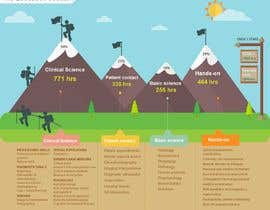Analyze The Physical Components That Are Driving Brand-New Approaches To Reduce Back Pain
Analyze The Physical Components That Are Driving Brand-New Approaches To Reduce Back Pain
Blog Article
Developed By-Nolan Kramer
As you consider the future landscape of neck and back pain treatment, envision a world where innovation effortlessly intertwines with traditional treatments to offer novel options. Imagine a world where virtual reality not only entertains yet likewise heals, where robotic precision redefines minimally intrusive procedures, and where biofeedback equips individuals in their discomfort management trip. The developments in pain in the back treatments are not just hypothetical situations however tangible truths forming the method we come close to and alleviate this widespread condition.
Virtual Reality Therapy for Neck And Back Pain
Are you tired of conventional treatments for your pain in the back? Virtual Reality Treatment provides an unique strategy to handling your discomfort. By engaging on your own in an online setting, you can sidetrack your mind from the discomfort signals being sent out to your brain, giving relief in a special and cutting-edge way.
Using specialized virtual reality headsets, you can take part in different tasks and simulations designed to target particular areas of your back that are creating you discomfort. These immersive experiences can help you kick back stressful muscle mass, enhance your pose, and enhance your overall movement.
In addition, virtual reality therapy can also help in lowering anxiety and stress and anxiety degrees, which are often contributing aspects to back pain.
Imagine having the ability to go through treatment without the demand for drug or invasive procedures. With Virtual Reality Treatment, you have the opportunity to manage your pain in the back in a risk-free and non-intrusive manner.
Robotic-Assisted Pain In The Back Therapies
Utilizing sophisticated robot technology, back pain treatments have actually progressed to incorporate robot support in targeting and attending to particular areas of discomfort in a specific and controlled way.
Robotic-assisted back pain therapies use a high degree of accuracy and modification, allowing for much more reliable and customized treatment for individuals experiencing neck and back pain. These robotic systems can perform minimally invasive treatments with enhanced accuracy, reducing the risk of issues and enhancing outcomes.
Robotic-assisted therapies give specialists with real-time feedback and imaging, allowing them to navigate the back with extraordinary accuracy. By using https://www.cbc.ca/news/copyright/british-columbia/bc-chiropractors-x-ray-policy-1.5957385 or gadgets, healthcare providers can access hard-to-reach locations with higher convenience, causing even more successful interventions.
In addition, these modern technologies can adjust to the individual's motions during surgery, guaranteeing a much safer and more trusted treatment.
Biofeedback Technology in Back Pain Administration
With the advancement of innovation in pain in the back treatments, biofeedback modern technology becomes a useful device in handling and relieving discomfort associated with pain in the back. Link Website allows you to obtain recognition and control over bodily features that are normally spontaneous, such as muscular tissue stress and heart price.
By using sensors to keep an eye on these features, biofeedback devices offer real-time information that allows you to make aware modifications to lower discomfort and stress and anxiety degrees. With visual or auditory cues, biofeedback helps you recognize how your body reacts to different circumstances, equipping you to change your actions and boost physical well-being.
This innovation promotes leisure, enhances posture, and help in muscular tissue re-education, all of which are critical elements in managing back pain efficiently. By incorporating does medicaid cover chiropractic care into your neck and back pain management strategy, you can take an active duty in your treatment and accomplish lasting relief from discomfort.
Conclusion
To conclude, the future of back pain therapy looks brilliant with the developments in virtual reality therapy, robotic-assisted treatments, and biofeedback technology. These emerging innovations use innovative solutions to ease back pain, boost movement, and boost total lifestyle. With proceeded r & d, these sophisticated therapies have the prospective to reinvent the way we approach and deal with neck and back pain, offering expect those seeking reliable and individualized options.
